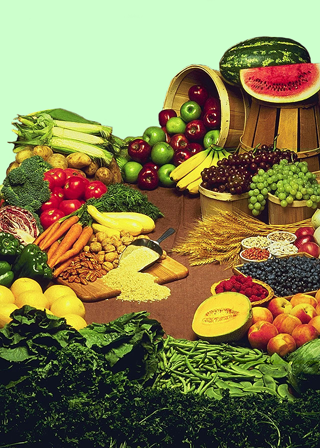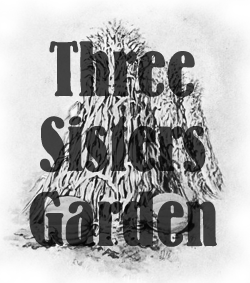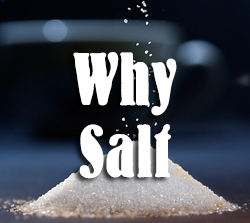
Native American Gardening
Excerpted from Chapter 15 - Garden
From Out of Harm's Way 1
A garden should be a very important part of your survival plan. A garden large enough to supplement the diet of a large Group will not be hard to plan and maintain. The only extra supplies you will need is seed.
Seed should be chosen carefully. It is imperative that all seeds you cache are of the heirloom varieties rather than the hybrids varieties.
Now you may ask what is the difference between heirloom and hybrid varieties. Basically hybrid seeds of course come from hybrid plants. In other words these are plants that for a number of reasons have been modified from their natural state. Hybrid plants are plants that have been cross-bred with other plants. This is done in order to take advantage of certain desirable traits of each plant while at the same time getting rid of unwanted traits. This all sounds well and good until you discover that seeds collected from hybrid plants will not produce true to type plants. In other words, seeds collected from heirloom plants produce true to type plants where seeds collect from hybrid plants do not.
In a long-term survival situation being able to collect seeds from your plants each year will be critical. This will be your only source of seeds.
Of course, you want to make sure the plant seeds you have in your cache are plants that will grow at the evacuation point, in other words make sure they are compatible to the climate. You will need to consider such things as altitude, rain fall, and length of growing season.
There are a few common sense rules you should have in mind when choosing a garden location.
First of all chose an area of ground that will be easy to clear of brush and grass. Make sure it will get sunshine at least six hours a day. It should also be a well-drained location and not in a flood prone area.
The main problem you will have is animal and bird control. Animals such as squirrels, mice, and birds will sometimes dig out your seeds. Once the plant breaks the ground, rabbits and deer may eat them. Then after the plants start producing all the animals and birds will be a problem. A couple ways in which to fight this is with some type noisemaker or maybe a scarecrow.
Sometimes a piece of cloth or something blowing in the wind will scare them off. Perhaps the best method of scaring wild life will be using a dog. A dog will usually bark and chase anything that gets in the garden. The Native Americans use to solve this problem by letting the young boys guard the plants day and night.
I have included three articles that I feel will be very helpful in a long term survival situation. There is no doubt you will require a garden. With few exceptions, you will be required to garden with only the basic tools. With this in mind I have chosen three articles featuring three Native Americans concepts of gardening. Begin with “The Three Sisters,” “The Companion Planting," and “Zuni Waffle Garden."
–The Three Sisters–
For untold years many of the Native Americans have grown corn, squash and beans. According to Iroquois legend, corn, beans, and squash are three inseparable sisters who grow and thrive together. They believe these three crops are special gifts from the Great Spirit.
The original concept of the "Three Sisters" incorporated the planting of corn, beans, and squash in a single mound or bed. In this way, each plant benefited the others. The cornstalk supports the climbing bean vines. The beans help replenish the soil with needed nutrients. The squash provides a number of advantages to the Sisters. The large squash leaves shade the mound inhibiting the growth of weeds, conserves water by slowing evaporation. It is also believed that the spines on the squash plant helps in keeping raccoons from helping you harvest your crops. Personally I find it hard to believe that raccoons would let these spines slow them down.
The "Three Sisters" are believed to be the first crops that were cultivated by many of the Native American tribes. All three of these crops have been found in the ruins throughout the Americas, Mesa Verde, in Colorado, Chaco Canyon, in New Mexico, Range Valley, in Utah, Chichen Itza, and the Mayans ruins throughout Mexico.
The modern day concept of the "Three Sisters" is referred to as companion planting. Companion plants are where two or more different type plants are planted in close proximity to each other. In this way the plants benefits each other in some way; corn provides a location for the bean vines to grow, beans provide nutrients needed by other crops, squash provides shade and etc. Companion planting is usually down on a small scale. In modern times the concept has been expanded to include many other plants. The "Three Sisters" concept of gardening is ideal for a long term survival situation. It is a proven method of gardening, making it ideal for a garden in a survival situation. This method was a major contributing factor for the survival of the Native Americans.
One of the major advantages of this method of gardening is its small foot print. Grown as a group these plants will provide high yields with minimal space and cultivation.
To be successful there are four points that should be considered :
• Choosing the right plants
• Plant correct varieties of plants
• The proper time to plant each type plant
• The proper location
Another important point to consider is fertilizer. The Native Americans usually used fish as a means of fertilizing their crop. However, to be of much benefit the fish was placed in the mounds the previous year. In a survival situation the use of leaf mulch worked into the mound will give a more imitate benefit.
–Correct Plant–
–Corn, Beans, Squash–
All survival gardens should include corn, beans and squash. A variety of these three plants will grow throughout the United States. Corn, beans and squash combine to create a nearly perfect meal loaded with essential vitamins and minerals.
–Beans–
Beans provide a high-quality protein food source that combines well nutritionally with corn. Beans also play a valuable role in the "Three Sisters" garden. Through a symbiotic relationship with rhizobium bacteria, beans help to take nitrogen from the air and convert it into a usable form for next year's crop.
Pole beans are best adapted to directly climb the corn stalks, as opposed to sending runners across the ground.
Scarlet Runner is a popular heirloom pole bean that is famous for its large cluster of bright red flowers.
Genuine Cornfield consistently produces in the heat of Southern summers.
True Cranberry a dark red bean with a meaty texture and a nutty chestnut-like flavor, also performs well in the South and in the Northeast.
Cornfield, not related to Genuine Cornfield does well in the Pacific Northwest because it matures before the fall rains come.
align="justify"Hopi Purple a favorite in the arid Southwest is a purple bean with black crescent moon strips.
–Corn–
Corn is the basic plant of the "Three Sisters" garden. It is considered to be the most important of all Native American crops. The variety of corn you use in your garden should be carefully chosen. The tall, sturdy heirloom varieties work best because they are capable of supporting the beans. Traditionally, most of the corn grown by Native Americans is dry field corn, which is used in flour production. One of the biggest advantages of this type corn in the survival garden is that it is harvested late in the season when the ears have dried on the stalk.
Dry field corn is divided into three categories: dent, flint, and flour corn.
• Dent corns are adapted best to the Southeast and the Midwest. Dent corn has a distinctive dimple-like dent on top of the kernel when it is fully dried. A dent corn that grows well most anywhere in the United States is the Cherokee Blue and White. Reid's Yellow Dent can also be widely grown.
• Flint corn grows best in the northern plains region. The kernels of flint corn do not shrink when they are dry. A popular flint corn is Indian Ornamental with colors ranging from purple to yellow.
• Flour corns usually have thinner-shelled kernels filled with soft white starch. Flour corns were developed in the arid Southwest. They are less likely to succeed in cooler northern regions with short growing seasons and in moist, humid areas where they are susceptible to a fatal rust disease.
• Hopi Pink is a short, drought-resistant corn, with kernels range in color from cranberry to light pink. This variety has plump, thin shelled kernels that grind easily into find flour. A flour corn that works well in northern gardens is Mandan Bride. This variety is also drought tolerant, with red, blue, yellow, pink, and purple spotted kernels.
Corn can be harvested earlier in the season when still "green corn." Green corn is harvested when the corn is still in the "milk" stage, when the kernels are at their sweetest and can be eaten fresh.
| Variety | Type | Color | Can Be Eaten Fresh | Comments |
| Anasazi | Flour | Multi | Yes | Ancient Southwestern Variety, Drought Tolerant |
| Beasley's Red Dent | Dent | Red | Yes | Heirloom From Indiana |
| Black Mexican/Iroquois | Sweet | Blue, Black | Yes | Smaller Variety From Northwest |
| Black Aztec | Sweet | Blue, Black, Purple | Yes | Originated From Southern Mexico |
| Bloody Butcher | Dent | Red | Yes | Northeastern United States, Virginia area |
| Blue Clarage | Dent | Blue | Yes | Ohio, West Virginia |
| Bronze-Orange | Sweet | Bronze-Orange | Yes | Selected By Alan Kapuler |
| Cherokee Blue & White | Dent | Blue & White | Yes | Grown Throughout North America |
| Cherokee White | Flour | White | Grown 12 - 15 ft | |
| Fiesta | Flint | Multi | Developed in New Hampshire | |
| Hopi Pink | Flour | Pink | Short, Drougth Tolerant, Southwest Variety | |
| Hickory King | Flour | Yellow | 12 ft Tall Heirloom | |
| Indian Ornamental | Flint | Multi | Widely Grown By North American Indians | |
| Little Jewels | Flint | Multi | 4" Long Corn Developed In New Hampshire | |
| Mandan Bride | Flour | Multi | Originated From The Mandan Tribe | |
| Mandan Red | Flour | Reddish Black | Yes | Developed In Washington |
| Oaxaca Green | Dent | Green | Southern Mexico, Makes Green Flour | |
| Rainbow Inca | Sweet | Multi | Yes | Developed By Alan Kapuler |
| Rainbow Indian | Flour | Multi | Developed By Alan Kapuler | |
| Texas Honey June | Sweet | Yellow | Yes | Heirloom 7-8 ft Stalks |
| Tuscadorea/Iroquois White | Flour | White | Tall, Iroquois Variety |
–Pumpkin–
–Pumpkin–
Long Pie (Indian or Golden Oblong) are still grown by the Native Americans of the Northeast. It looks like a fat zucchini with the texture of a pumpkin. It has a long shelf life and usually doesn't turn orange until after it is harvested.
Connecticut Field A disease-resistant variety suited for the Southeast. This is a very vigorous Native American heirloom that yields large yellow pumpkins.
| -Companion Planting- | ||
| Crop | Companions | Incompatible |
| Asparagus | Tomato, Parsley, Basil | |
| Beans | Most Vegetables & Herbs, Irish Potato, Cucumber, Corn | |
| Beans, Bush | Strawberry, Celery, Summer Savory | Onion |
| Beans, Pole | Corn, Summer Savory, Radish | Onion, Beets, Kohlrabi, Sunflower |
| Beets | Cabbage & Onion Familes, Lettuce | Beans, Pole |
| Cabbage Family | Aromatic Herbs, Celery, Beets, Onion Family, Chamomile, Spinach, Chard | Dill, Strawberry, Pole Beans, Tomato |
| Carrots | English Peas, Lettuce, Rosemary, , Onion Family, Sage, Tomato | Dill |
| Celery | Onion & Cabbage Families, Tomato, Bush Beans, Nasturtium | |
| Corn | Irish Potato, Beans, English Pea, Pumpkin, Cucumber, Squash | |
| Cucumber | Beans, Corn, English Pea, Sunflower, Radish | Potato, Irish, Aromatic Herbs |
| Eggplant | Beans, Marigold | |
| Lettuce | Carrot, Radish, Strawberry, Cucumber, Beets, Carrot, Lettuce, Cabbage Family, Summer Savory | |
| Onion Family | Tomato, Aspargus | Beans, English Peas |
| Parsley | Tomato, Asparagus | |
| English Peas | Carrots, Radish, Turnip, Cucumber, Corn, Beans | Onion Family, Gladiolus, Potato, Irish, Pumpkin, Squash, Tomato, Cucumber, Sunflower |
| Potato, Irish | Beans, Corn, Cabbage Family, Marigolds, Horseradish | |
| Pumpkins | Corn, Marigold | Potato, Irish |
| Radish | English Pea, Nasturtium, Lettuce, Cucumber | Hyssop |
| Spinach | Strawberry, Fava Bean | |
| Squash | Nasturtium, Corn, Marigold | Potato, Irish |
| Tomato | Onion Family, Nasturtium, Marigold, Asparagus, Carrot, Parsley, Cucumber | Potato, Irish, Fennel, Cabbage Family |
| Turnip | English Peas | Potato, Irish |
–Squash–
Squash grow low to the ground and serve as living mulch. The large leaves block out much of the sunlight, thus reducing weed germination. It is also believed that chemical secretion from squash plants have adverse effect on some weeds. Since we are looking at the "Three Sisters" as a survival garden we will restrict our squash choices to Winter Squash in that winter squash has a long shelf life. Winter squash (such as Butternut, Hubbard, Buttercup, Amber, Acorn, Spaghetti squash, and Pumpkin) are harvested at maturity, generally at the end of summer, cured to further harden the skin. Winter squash, when stored in a cool place will last for months.
Seeds are started after all danger of frost is past and the soil is warm. They can be started inside 3 - 4 weeks before the predicted last frost date. Seeds are placed one inch deep, 5 - 6 seeds to the hill.
Acorn : has distinctive longitudinal ridges and sweet, yellow-orange flesh. It will keep for several months in a cool dry location. Roughly 85 days after germinating, acorn are ready for harvest. Curing takes a week to ten days in a sheltered area outside.
Banana : grows in most regions of the country. Its protective skin turns into a tough harden rind. Very durable and is successfully stored for the entire winter.
Spaghetti : fruit ranges from ivory to yellow or orange in color or green with white streaks. Its center contains many large seeds. Its flesh is bright yellow, orange and white for the latter variety. When raw the flesh is solid and similar to other raw squash when cooked, the flesh falls away from the fruit in strands like spaghetti.
Planting designs and cultivation practices vary according to climatic region. Garden styles were developed mainly out of practical considerations, such as moisture availability, climate, and the length of the growing season. The Wampanoag garden style works well east of the Mississippi. Hidatsa gardens were developed to thrive in the climate of the northern Plains, while the Zuni waffle garden was designed to conserve water in the arid Southwestern climate.




